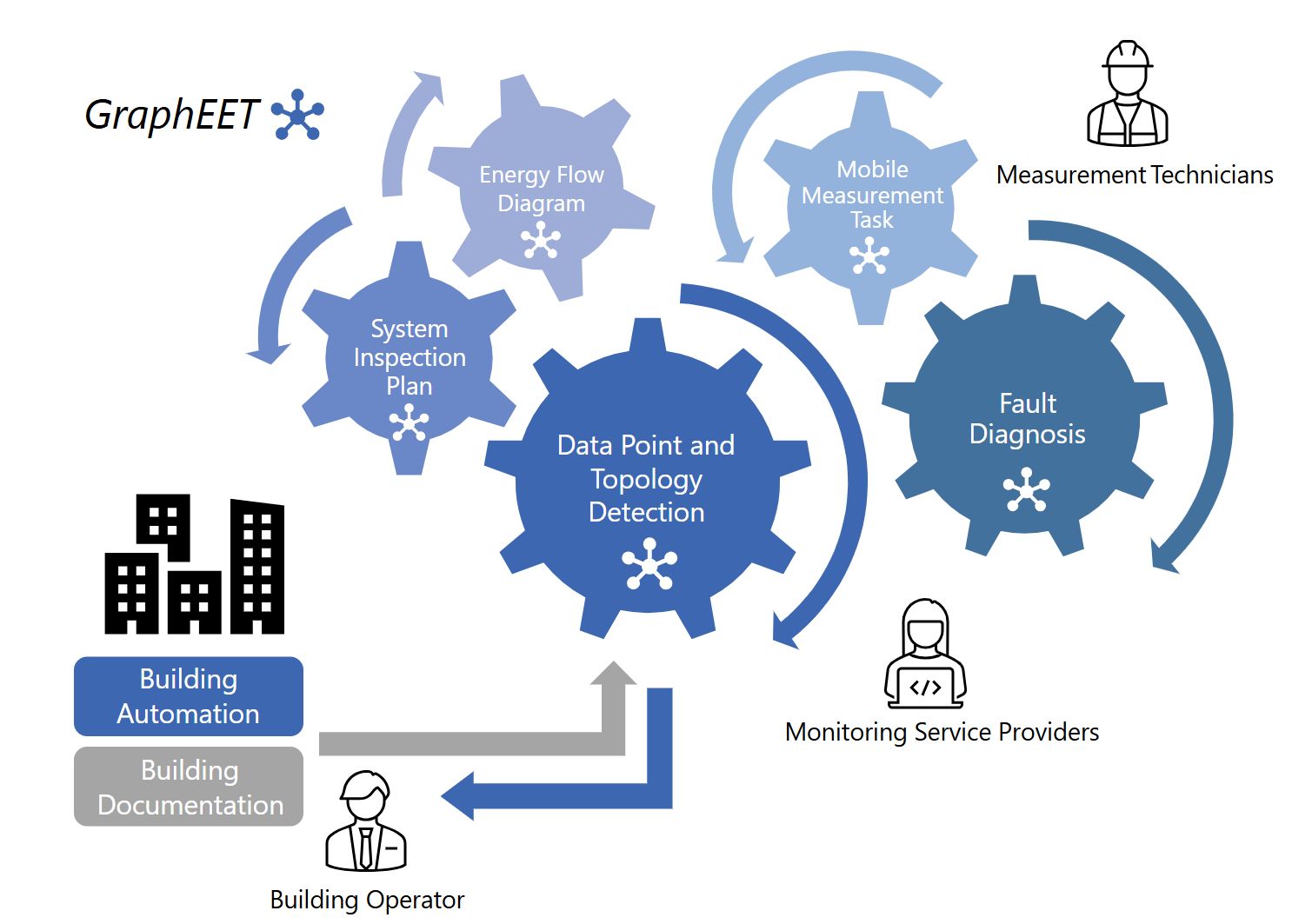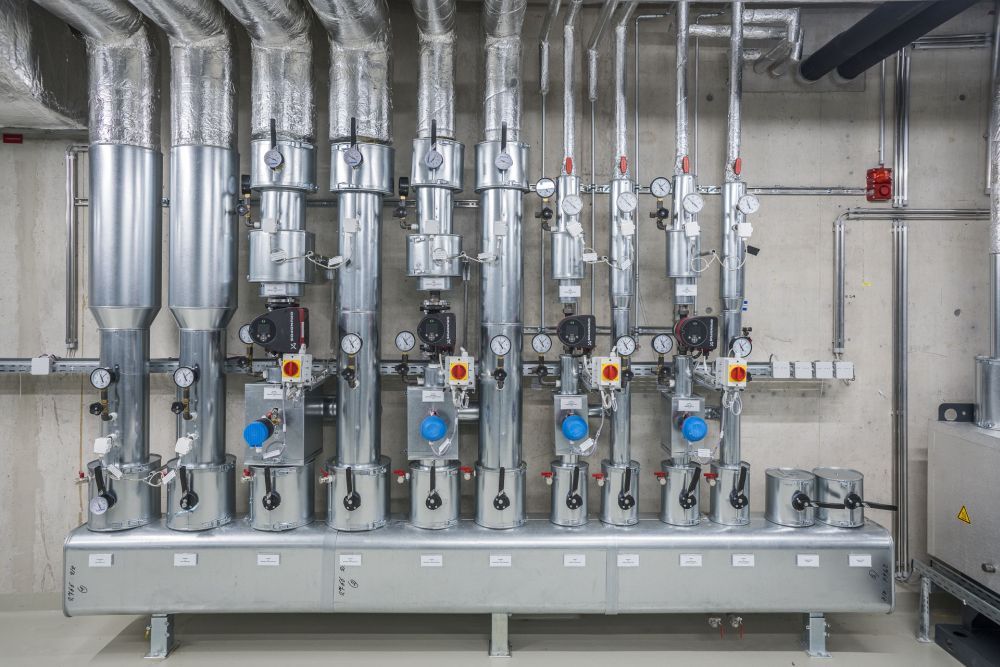Technical monitoring (TMon) can reduce the energy consumption of buildings by up to 20%. However, a shortage of skilled workers and manual steps are slowing down widespread implementation. In the "GraphEET" R&D project, Fraunhofer ISE and Offenburg University of Applied Sciences are working with industry partners to develop a data-based TMon workflow. The aim is to develop hybrid AI methods for the recognition of data points and plant topologies and to map the recognised objects and structures in digital twins as knowledge graphs. This should enable test templates, fault diagnoses and mobile measurement tasks to be applied automatically.
Graphs and AI Methods for the Technical Monitoring of Energy-Efficient Buildings
GraphEET
Initial Situation
Due to the current shortage of skilled workers, the potential of TMon often remains untapped: on the one hand, evaluating information from GA systems requires many manual steps, and on the other hand, the lack of digitised processes makes implementation time-consuming and resource-intensive. A key challenge here is the automatic recognition and assignment of building-specific system identification systems from building automation systems in order to be able to evaluate system functions in monitoring platforms using time series data. In addition, there is a lack of methods that can automatically recognise the topologies of building services systems from time series and metadata and convert them into a digital structure, e.g. as the basis for a digital twin.
Objective
With GraphEET, we aim to establish a fully digital workflow for technical monitoring. To this end, we are working with our partners to develop hybrid AI processes that can directly identify sensors, meters and entire plant topologies from building automation data. The identified objects will be mapped in knowledge graph models that clearly describe components, relationships and locations. On this basis, standardised analysis and test plan templates will be developed that can be automatically applied to systems with different topologies. In addition, workflows for mobile measurement tasks will be integrated. All functions will be incorporated into GUI-supported software demonstrators, which will be validated in pilot buildings.

Approach
We record TMon sub-processes, derive requirements and develop a standardised knowledge graph model that describes systems, sensors, control systems and energy and hydraulic connections. To this end, we are expanding the TBSys ontology developed at Fraunhofer ISE, which is based on Standard 223P and Brick Schema. Building on this, we are creating a plant database with templates, test variables and control sets, as well as a data structure for digital mobile measurement tasks. An AI pipeline combines text recognition using generative AI with time series classification and symbolic AI for data point and topology recognition. The components will be integrated into the monitoring platform of project partner Mondas. The methods will be demonstrated and validated on demonstrators in real monitoring projects.
Funding
The “GraphEET” project is funded by the Federal Ministry of Economic Affairs and Energy (BMWE).

nicht entfernen!!
